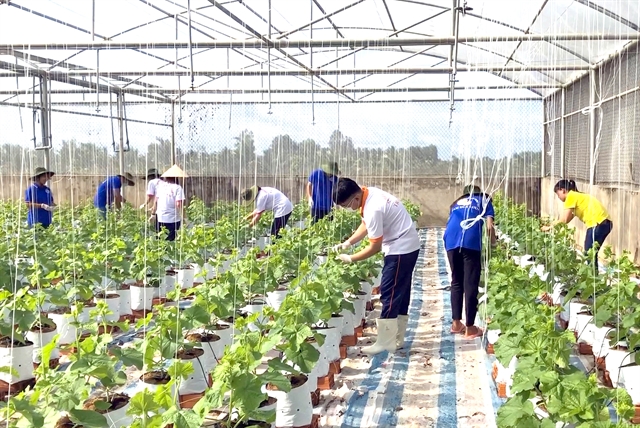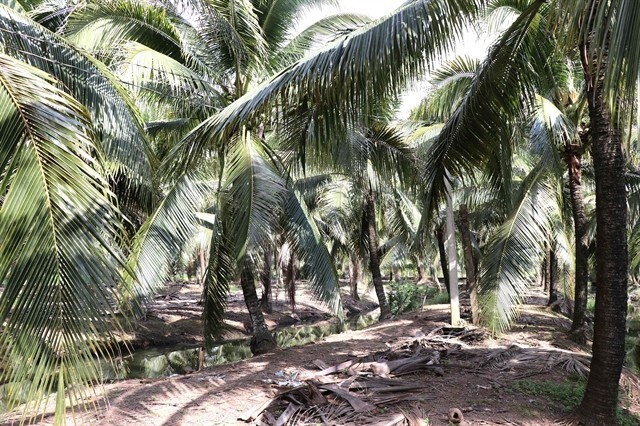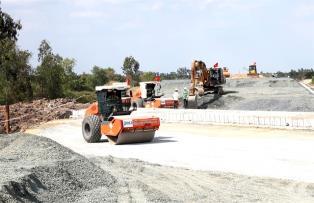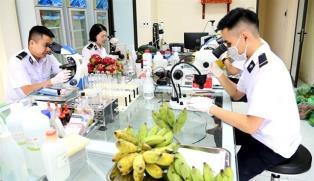Vĩnh Long Province is accelerating its shift towards green, organic and circular agriculture to enhance economic value, build climate resilience and ensure sustainable exports.
VĨNH LONG — Vĩnh Long Province is accelerating its shift towards green, organic and circular agriculture to enhance economic value, build climate resilience and ensure sustainable exports.
Located at the centre of the Cửu Long (Mekong) Delta, the province enjoys favourable natural conditions with fertile soil and a dense river network, making it a key agricultural hub.
Lâm Văn Tân, director of the province Department of Agriculture and Environment, said: “The agricultural sector is restructuring towards green, organic and circular development. The focus is on expanding high-quality rice areas, reducing emissions and rotating short-term crops on rice fields to increase value.
“Around 35 per cent of the province’s key agricultural products are now cultivated under value chains. This optimises production efficiency, enhances added value, improves farmers’ income and promotes sustainable agricultural growth.”
The province has adopted several high-tech and circular production models. Farmers and co-operatives have invested in smart monitoring systems and applied biotechnology to treat by-products and regenerate soil nutrients.
Trần Văn Đại, a farmer in Tân Xuân Commune, said: “Since the pest alert system was installed in our rice fields, farming has become easier. Each day, the device sends updates on pests, salinity, climate, and weather conditions. Farmers can then compare the data with their field observations to decide how to care for the rice, apply fertilisers and prevent pests effectively.”
The province now has 68,535ha of high-tech agriculture, or 8.75 per cent of its total farming area, which is helping improve efficiency and reduce environmental impact.
Lữ Quang Ngời, chairman of the Vĩnh Long People’s Committee, said: “The province has directed and strengthened support for the agricultural sector to reorganise production in line with planning, local advantages, regional ecology, and market demand. The province is restructuring agriculture towards improving quality, added value and sustainability, and developing large-scale concentrated farming areas linked to markets.”
Circular production models, such as reusing rice straw, coconut by-products, fruit peels, and aquaculture sludge, are being applied across the province.
These practices help reduce farming costs, improve soil quality and create a cleaner farming environment.

International standards
Co-operatives and enterprises are adopting international standards, diversifying products and expanding export markets.
The Tấn Đạt Agricultural Production and Service Co-operative in Trung Ngãi Commune specialises in producing, processing and trading organic rice and rice-based products.
“We have maintained and developed production to international organic standards, including those of the United States Department of Agriculture, the EU, Japanese Agricultural Standards, and Canada,” Đoàn Văn Tài, the director of the co-operative, said.
The province’s organic rice has gained a stronger foothold in international markets.
Along with rice and citrus fruits, coconut is one of the province’s three key crops, and it now has 120,000ha of coconut orchards, making it the country’s largest producer and with many organic-certified farming areas and exports of various products made from the nut.
Cuu Long Processing Products Coconut Company Limited, located in Phú Khương Ward, produces 17 products made entirely from coconut juice.
“Our products, including popular items such as coconut masks, oil-absorbing sheets and coconut straws, are also exported to South Korea and Taiwan (China),” Trương Thị Cẩm Hồng, its director, said.
The province plans to expand the area under coconut to 134,000ha by 2030, of which 50 per cent will meet international organic standards.
It aims to raise the average agricultural output to VNĐ320 million (US$12,200) per hectare per year by 2030.
To achieve these targets, the Department of Agriculture and Environment will work to harmonise land use, irrigation, transport, and environmental plans under the “one map – one record” principle.
This approach ensures consistency and transparency while aligning with climate change scenarios and risk zoning plans. It will also support sustainable resource management and provide a solid legal foundation for attracting investment and long-term development.
The department will simultaneously complete the land database and promote the use of advanced technologies such as geographic information systems, the Internet of Things and artificial intelligence for disaster forecasting and agricultural traceability.
It will enhance production infrastructure, replicate circular agriculture models, promote public–private partnerships, and assist enterprises investing in processing and post-harvest preservation.
Its key targets include an annual growth of 3.5–4 per cent by the agriculture, forestry and fisheries sector in 2025–30.
The province eyes economic growth of over 10 per cent annually in this period.
Agricultural output is expected to reach VNĐ102 trillion (US$3.9 billion) this year, accounting for 31.5 per cent of the province’s economy. — VNS






